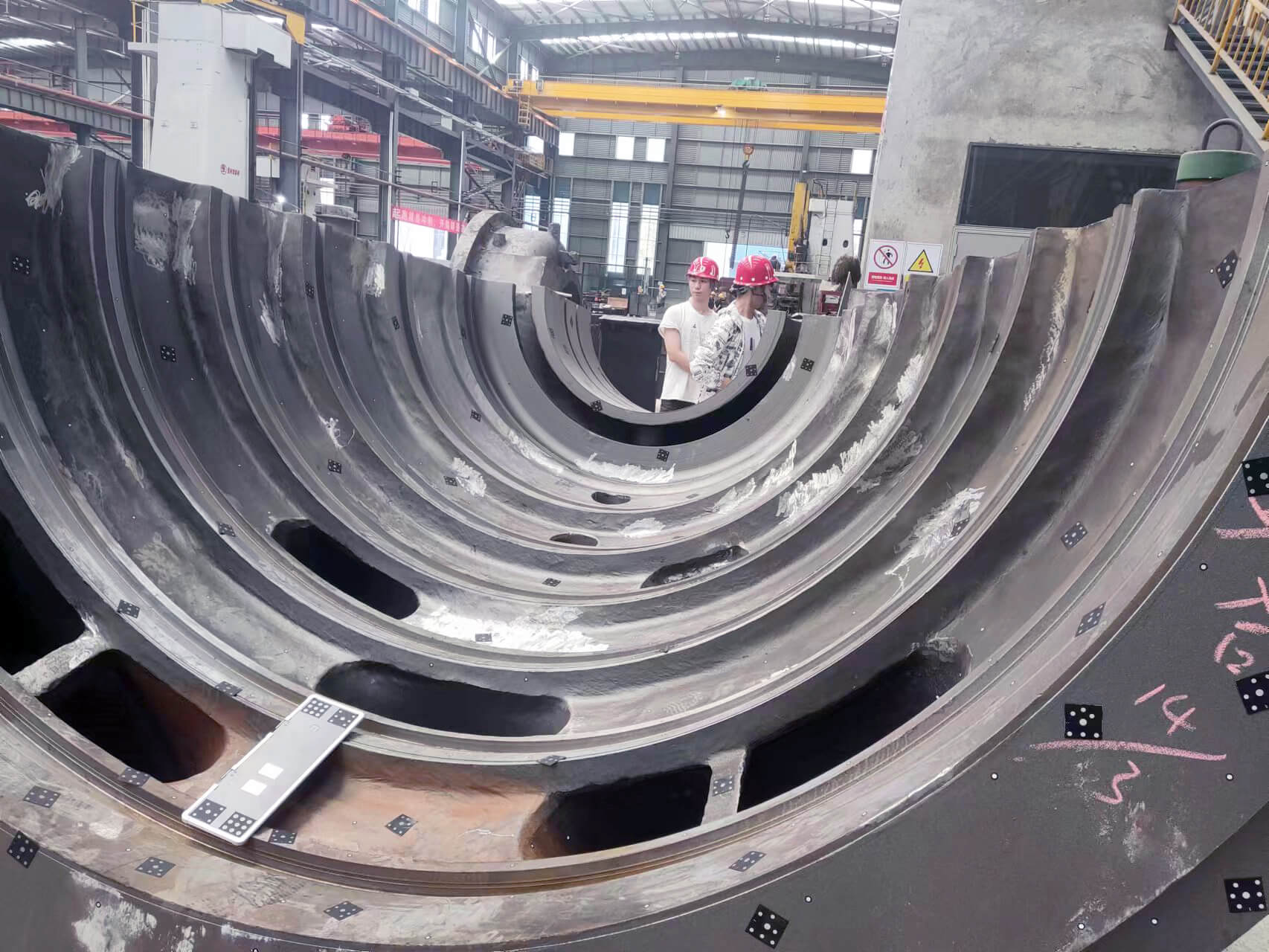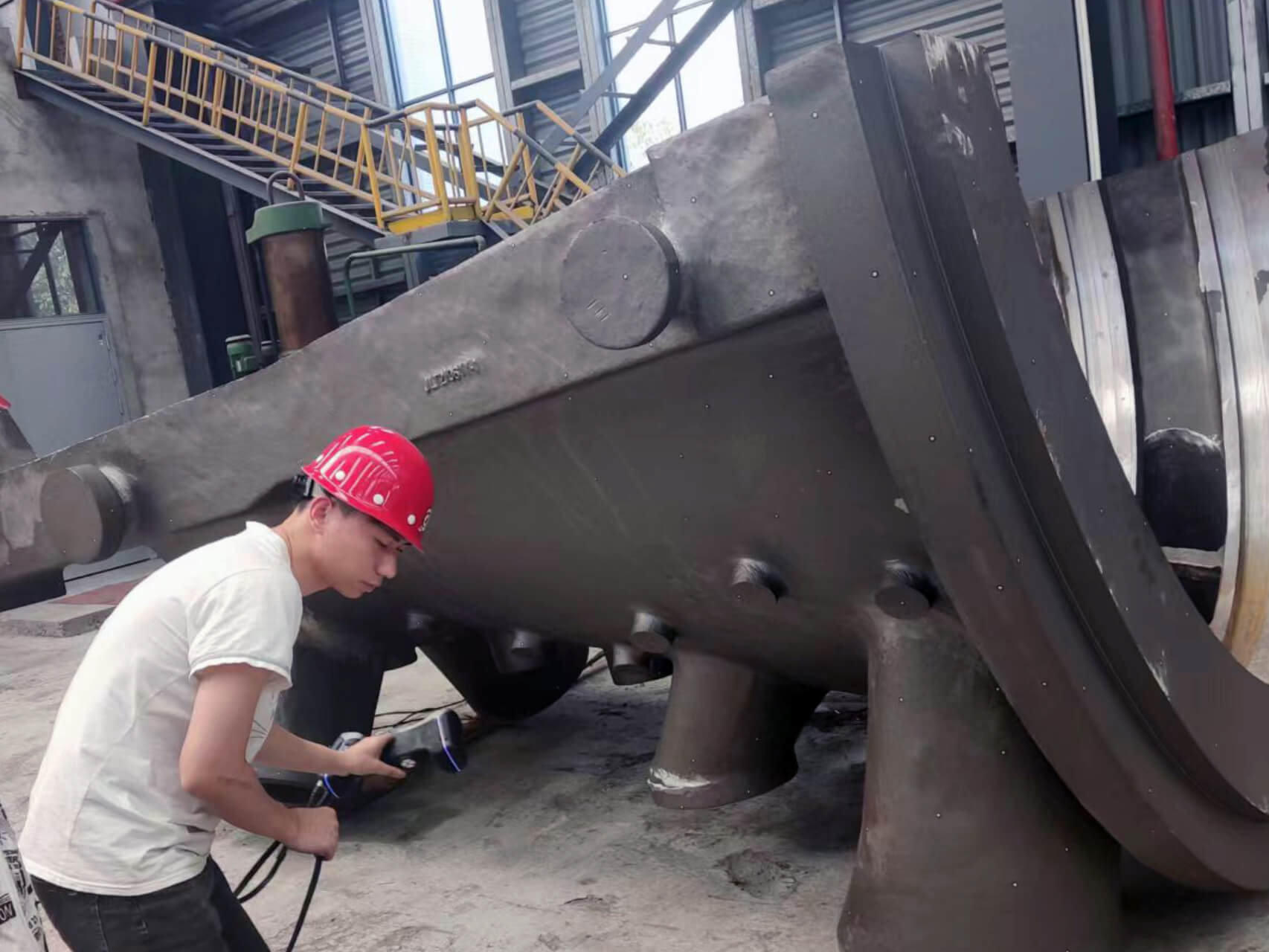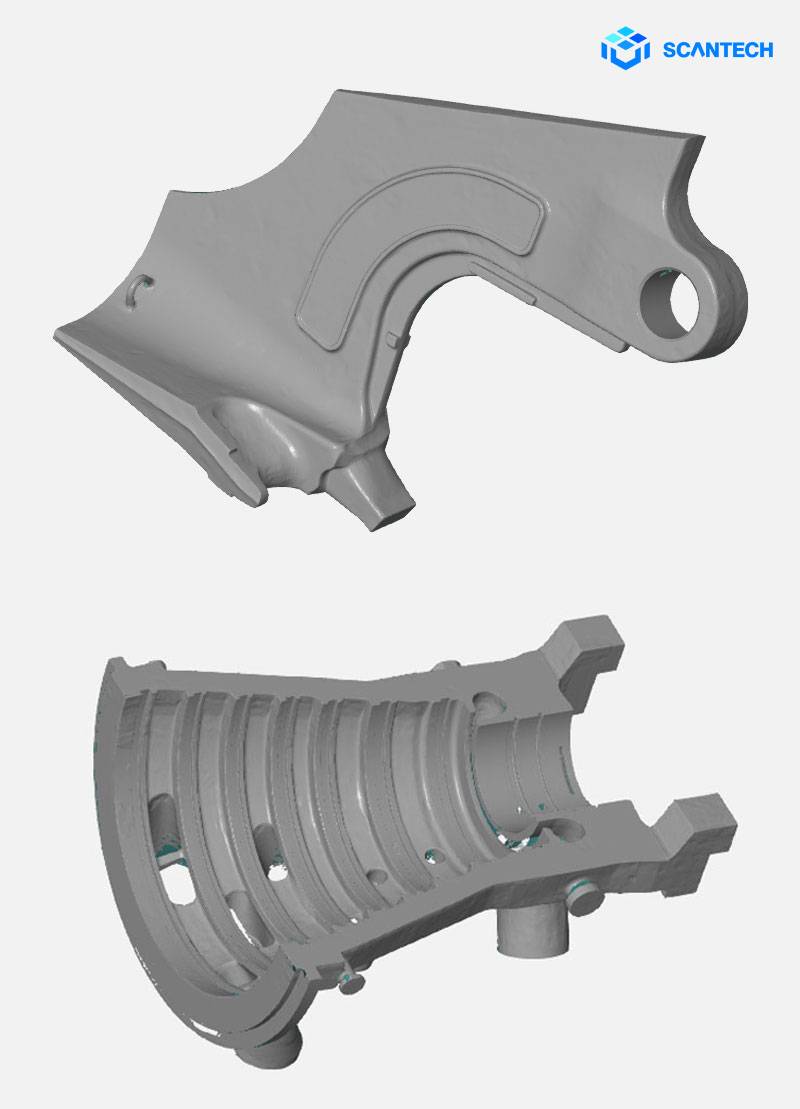3D Scantech: 3D Inspection of Large-scale Castings to Reduce Costs and Increase Efficiency
What Is Inspection of Castings?
Foundries and clients inspect castings during manufacturing to identify any hidden defects. Common defects include gas porosity, shrinkage, surface defects, and more. There are different methods for inspecting castings to ensure that manufacturers have finished parts of high quality.
The non-destructive test (NDT) is commonly used to assess the quality of castings without damaging them. Using NDT, you can identify defects that negatively affect the material’s strength. Thanks to non-contact 3D scanning, handheld 3D scanners are capable of measuring castings without causing harm to the parts.
Engineers can significantly save time and costs for inspection by using handheld 3D scanners to measure castings. Read the case study below to learn more about how portable 3D scanner KSCAN-Magic contributes to casting inspection.
3D Measurement Solutions for Industrial Castings
Inspection for Small-to-large Castings
The customer in this case is a leading foundry in China, providing high-quality products for industry giants in electric power, petroleum, chemical, machinery, rail transportation, shipbuilding, etc.
The customer used to measure small-scaled castings by lineation, which was inefficient and not precise. They had no efficient inspection methods to inspect large-scale parts. Besides, incorrect measurement results led to insufficient machining allowance.
It means that the part manufactured can be defective or even discarded, resulting in substantial financial losses. Adopting a piece measurement device that is efficient enough is necessary to solve these pain points.
Finally, the customer chose Scantech’s portable 3D scanner KSCAN-Magic to measure the castings, determine the machining allowance, and carry out the full-size measurement on the product to ensure the product quality.
Features of Castings
These small iron castings are about 1.5-2.5 m long, and large castings are 6 m. Some of their machined surfaces are reflective and hard to be scanned.

Solutions
3D Scanner Used:
KSCAN-Magic composite 3D Scanner
Measurement of Large Castings:
Photogrammetry + 3D scanning: 45min
Operators Needed:
One worker

Benefits of Scantech’s 3D Solutions for Castings
Built-in Photogrammetry to Guarantee Accuracy
With its built-in photogrammetry, KSCAN-Magic captured 3D coordinates of coded targets on these large castings, which served as guidance for further 3D scanning.
Thanks to its large shooting area and sophisticated algorithm, it helped reduce the accumulated errors of alignment that occurred during 3D scanning.

Compared with ordinary photogrammetry equipment, KSCAN-Magic boasts a unique feature as its camera has no shutter. It prolongs the life limit of cameras and reduces maintenance costs.
Infrared Large-area Scanning to Increase Efficiency
KSCAN-Magic features a large-area scanning mode powered by parallel infrared lasers. Thanks to its 1440 mm x 860 mm scanning area, it can scan efficiently for large-scaled castings.

Traditionally, it requires 2 to 3 operators to measure these parts for one day. Now, it took just one day for an operator to fulfill the task. It dramatically improved measurement efficiency reduced manpower investment and reduced measurement costs.
Blue Laser Scanning to Ensure Good Details and High Speed
The engineer used KSCAN-Magic’s blue-laser fine-scanning mode to measure castings to meet the requirements of tight tolerances. With an accuracy of 0.020 mm and a resolution of 0.010 mm, all details of curved surfaces, grooves, corners, etc. were easily obtained.

Efficient 3D Measurement to Deliver Reliable Results
When measuring parts with traditional methods, dedicated labs are required. The creation and maintenance costs of these labs are expensive. Besides, most of the traditional methods only measure specific points of parts and fail to obtain full-field data.
Scantech’s portable and handheld 3D scanners can conduct on-site measurements anywhere and anytime, regardless of environmental conditions. With a scanning rate of up to 1.65 million MPS, KSCAN-Magic can obtain precise and complete data from all directions efficiently.
Comprehensive Analysis and Intuitive Report
After capturing the 3D data parts, the customer imported 3D models. These models were compared to the original CAD model to generate color maps, full-scale measurement reports intuitively show the dimensional results. Therefore, engineers quickly determined the actual machining allowance of the parts.

In addition, the scanning results were input to the machining tool for programming, delivering the optimal schemes for machining in terms of raw materials and time costs.

What Customer Says
“We have tried several photogrammetry instruments, but the results weren’t good enough. The results of large-scale parts failed to meet our requirements. Besides, we have to replace the camera shutter from now to then. The maintenance costs are high. Scantech’s 3D scanner has built-in photogrammetry and multiple scanning modes to choose from. It helps us to ensure measurement precision thanks to its large-area scanning and full-field 3D measurement. It is fast and easy to operate, which saves time and money.”
Conclusion
High-precise 3D scanning can optimize the process from prototype to mold construction, blank inspection, product inspection, product wear detection, and more in the casting industry.
Scantech’s portable 3D scanners perform non-contact measurements for small to large casting parts. Compared with contact measurement technology, it can capture the contour of complex surfaces like free-form surfaces more quickly and thoroughly and can reflect the deformation trend comprehensively.
The full-area measurement ensures a rapid inspection and repair of parts, thus shortening the production cycle and optimizing quality control. Scantech is committed to providing customers with accurate measuring instruments to reduce costs and increase efficiency.
This content was originally published on the 3D Scantech website.

